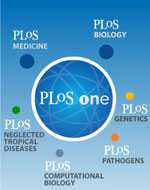PNAS:黑色素瘤转移的标记物PHIP蛋白
2012-05-06 Beyond 生物谷
近日,发表在PNAS杂志上的一项研究揭示了致命性的皮肤癌黑色素瘤中基因表达的升高,可以提高肿瘤的死亡率风险,该基因是潜在的新的治疗靶标。 研究论文呢题目为Pleckstrin Homology Domain-Interacting Protein (PHIP) as a Marker and Mediator of Melanoma Metastasis,该研究由加州太平洋医疗中心研究所(CPM
近日,发表在PNAS杂志上的一项研究揭示了致命性的皮肤癌黑色素瘤中基因表达的升高,可以提高肿瘤的死亡率风险,该基因是潜在的新的治疗靶标。
研究论文呢题目为Pleckstrin Homology Domain-Interacting Protein (PHIP) as a Marker and Mediator of Melanoma Metastasis,该研究由加州太平洋医疗中心研究所(CPMCRI)研究人员完成。
研究人员强调,这是第一次证实PHIP(PH结构域相互作用蛋白)在癌症中发挥作用。萨特亚太医学基金会黑色素瘤研究和治疗中心主任、CPMCRI科学家Mohammed Kashani-Sabet医学博士领导这项研究。
我们已经表明这种基因是扩散风险增加以及黑色素瘤死亡的一种标记物。研究这种基因有助于我们了解恶性黑色素瘤。希望进一步的研究将导致能有针对性的治疗黑色素瘤和其他癌症。
为了确定PHIP蛋白高水平对黑色素瘤转移的影响,研究人员检测了小鼠和黑色素瘤患者组织中该蛋白。
研究人员发现, PHIP表达的增加与人和小鼠的存活率降低有关。随后抑制小鼠黑色素瘤PHIP发现小鼠存活时间明显长于表达PHIP的小鼠。
研究人员还研究345名病患的黑色素瘤组织由,发现PHIP表达水平较低的患者比PHIP高水平的患者存活更久。
我们了解到,在小鼠和人身上, 肿瘤PHIP表达越多,癌症蔓延的风险较高,生存期越短。为了了解哪一种黑色素瘤可能携带高表达的PHIP,团队研究了肿瘤的基因构成。
最近研究主要集中在黑色素瘤的其他基因中,尤其是BRAF。其中约50%的黑色素瘤患者出现了该基因的突变。美国食品和药物管理局批准的突变的BRAF抑制剂,在2011年的时候能延长转移性黑色素瘤患者的生存期。然而,调控黑色素瘤转移的没有突变的该基因基因仍然未知,这意味着有没有BRAF突变,黑色素瘤患者有效的治疗方法也只有少数。
研究人员发现,在没有BRAF突变下的黑色素瘤,PHIP水平高。研究人员希望,未来个人黑色素瘤和其他癌症患者的治疗可以针对如PHIP,促进转移的基因开展。

doi:10.1073/pnas.1119949109
PMC:
PMID:
Pleckstrin homology domain-interacting protein (PHIP) as a marker and mediator of melanoma metastasis
David De Semira, Mehdi Nosratia, Vladimir Bezrookovea, Altaf A. Dara, Scot Federmana,
Geraldine Bienvenua, et al.
Although melanomas with mutant v-Raf murine sarcoma viral oncogene homolog B1 (BRAF) can now be effectively targeted, there is no molecular target for most melanomas expressing wild-type BRAF. Here, we show that the activation of Pleckstrin homology domain-interacting protein (PHIP), promotes melanoma metastasis, can be used to classify a subset of primary melanomas, and is a prognostic biomarker for melanoma. Systemic, plasmid-based shRNA targeting of Phip inhibited the metastatic progression of melanoma, whereas stable suppression of Phip in melanoma cell lines suppressed metastatic potential and prolonged the survival of tumor-bearing mice. The human PHIP gene resides on 6q14.1, and although 6q loss has been observed in melanoma, the PHIP locus was preserved in melanoma cell lines and patient samples, and its overexpression was an independent adverse predictor of survival in melanoma patients. In addition, a high proportion of PHIP-overexpressing melanomas harbored increased PHIP copy number. PHIP-overexpressing melanomas include tumors with wild-type BRAF, neuroblastoma RAS viral (v-ras) oncogene homolog, and phosphatase and tensin homolog, demonstrating PHIP activation in triple-negative melanoma. These results describe previously unreported roles for PHIP in predicting and promoting melanoma metastasis, and in the molecular classification of melanoma.
本网站所有内容来源注明为“梅斯医学”或“MedSci原创”的文字、图片和音视频资料,版权均属于梅斯医学所有。非经授权,任何媒体、网站或个人不得转载,授权转载时须注明来源为“梅斯医学”。其它来源的文章系转载文章,或“梅斯号”自媒体发布的文章,仅系出于传递更多信息之目的,本站仅负责审核内容合规,其内容不代表本站立场,本站不负责内容的准确性和版权。如果存在侵权、或不希望被转载的媒体或个人可与我们联系,我们将立即进行删除处理。
在此留言












#标记物#
102
#PNAS#
94
#色素#
82
#PHIP#
56
#黑色素#
83
#黑色素#
73